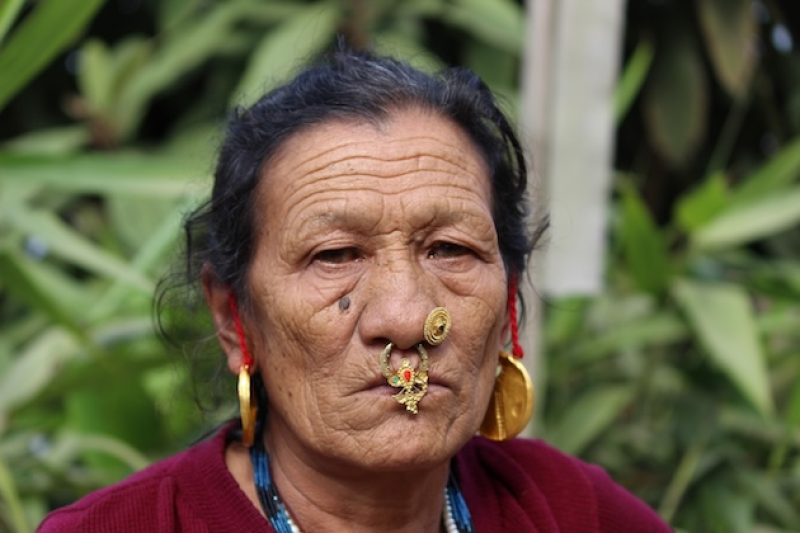- Cold wave disrupts life, livelihoods across northern Bangladesh |
- US to Exit 66 UN and Global Bodies Under New Policy Shift |
- LPG Supply Restored Nationwide After Traders End Strike |
- Stocks advance at both bourses; turnover improves |
- LCs surge for stable dollar, but settlement still sluggish |
Lethal Heatwaves Threaten Health of Aging Global Population

Facing frequent climate hazards, resultantly offsprings having migrated out, this South Sikkimese elder in India battles depression, anxiety and early onset of dementia.
The global population is ageing at a time when heat exposure is rising due to climate change. Extreme heat can be deadly for older adults, given their reduced ability to regulate body temperature. Since 1990, there has been an 85 percent increase in annual heat-related deaths among people aged over 65, driven by both warming trends and rapidly growing older populations.
Even more alarming, heat-related deaths in older adults are projected to rise by 370 percent annually if global temperatures increase by 2°C by mid-century. The world is currently on track to reach 2.7°C above pre-industrial levels by the end of the century, up from 1.14°C during 2013–2022.
With 2024 already recorded as the hottest year ever and the past 11 years the warmest since records began in 1880, the World Meteorological Organization (WMO) warns that 2025–2029 has an 80% chance of being even hotter. The world is nearing the critical 1.5°C warming threshold, raising the alarm over severe climate impacts.
As extreme heat becomes the “new normal,” the UN Environment Programme (UNEP) warns of heightened health risks for older persons in its Frontiers 2025 report released today.
Older adults—especially those with chronic illnesses like diabetes, hypertension, and heart disease; limited mobility; or age-related frailty—are especially vulnerable. The intensity, duration, and frequency of heat spells can trigger respiratory, cardiovascular, and metabolic diseases, leading to increased mortality.
“Heatwaves are among the most frequent and deadly impacts of climate change, along with floods and shrinking ice cover,” said Inger Andersen, UNEP Executive Director. “We must be prepared for the risks these impacts pose, especially for society’s most vulnerable, including older persons.”
The 7th edition of the Frontiers Report, titled The Weight of Time – Facing a New Age of Challenges for People and Ecosystems, highlights emerging environmental issues and practical solutions. The first edition in 2016 predicted the growing risk of zoonotic diseases—four years before the COVID-19 pandemic.
UNEP estimates that the global share of people aged 65+ will rise from 10% in 2024 to 16% by 2050. Most will live in cities—exposed to extreme heat, air pollution, and more frequent disasters.
Heatwaves are projected to become more intense, frequent, and persistent globally. Scientists warn that when heat and humidity combine, the danger is amplified: humidity reduces the body’s ability to cool itself through sweat.
Estimates show that a 1°C rise in temperature could expose 275 million people to humid heatwaves; at 2°C, this number jumps to 789 million; and at 3°C, a staggering 1.22 billion people could face deadly conditions.
Regions already experiencing humid heatwaves include parts of India and Pakistan, the Persian Gulf, the Arabian Gulf, the Red Sea, and eastern China.
Urban centres suffer more due to the urban heat island effect, where concrete, asphalt, and buildings trap and radiate heat. Informal settlements—often crowded, poorly ventilated, and built with tin or asbestos—become dangerously hot during heatwaves. Poorer areas also tend to lack greenery and suffer higher night temperatures.
Older adults who live in substandard housing, have no access to cooling systems or water, and are socially or economically marginalised are particularly ill-equipped to cope with heat extremes.
A recent rapid study by the Grantham Institute and the London School of Hygiene & Tropical Medicine analysed ten days of heatwaves (June 23 to July 2, 2025) across 12 European cities. It found that climate change nearly tripled heat-related deaths. Fossil fuel use raised heatwave temperatures by up to 2°C–4°C.
Of the 2,305 estimated deaths, 88 percent were among people aged 65 and over, reinforcing how underlying conditions increase vulnerability.
“It is society’s most vulnerable … who suffer most in the midst of record temperatures. Europe’s dependence on oil and gas corporations is giving a death blow to our parents and grandparents,” said Ian Duff of Greenpeace International.
Air pollutants such as fine particulate matter, ozone, and nitrogen dioxide trigger respiratory, cardiovascular, and cognitive illnesses in older adults. According to the Frontiers report, nearly half of the 1.24 million air pollution-related deaths in India in 2017 were among those aged 70 and older.
Climate change—through extreme heat, air pollution, floods, and drought—is not only worsening physical health but also contributing to dementia, late-life depression, anxiety, and mental health issues among the elderly.
“As this year’s Frontiers Report shows, solutions exist that can help protect communities and restore ecosystems long thought lost,” Andersen said, urging governments to act.
The report calls for age-friendly, green, and resilient urban planning, community-based disaster risk management, and improved access to climate information.
Investing in weather monitoring stations is critical. So is closing the digital divide: many older adults lack the digital literacy needed to access emergency alerts, do online banking, or purchase essential medicines in today’s increasingly digital world.

